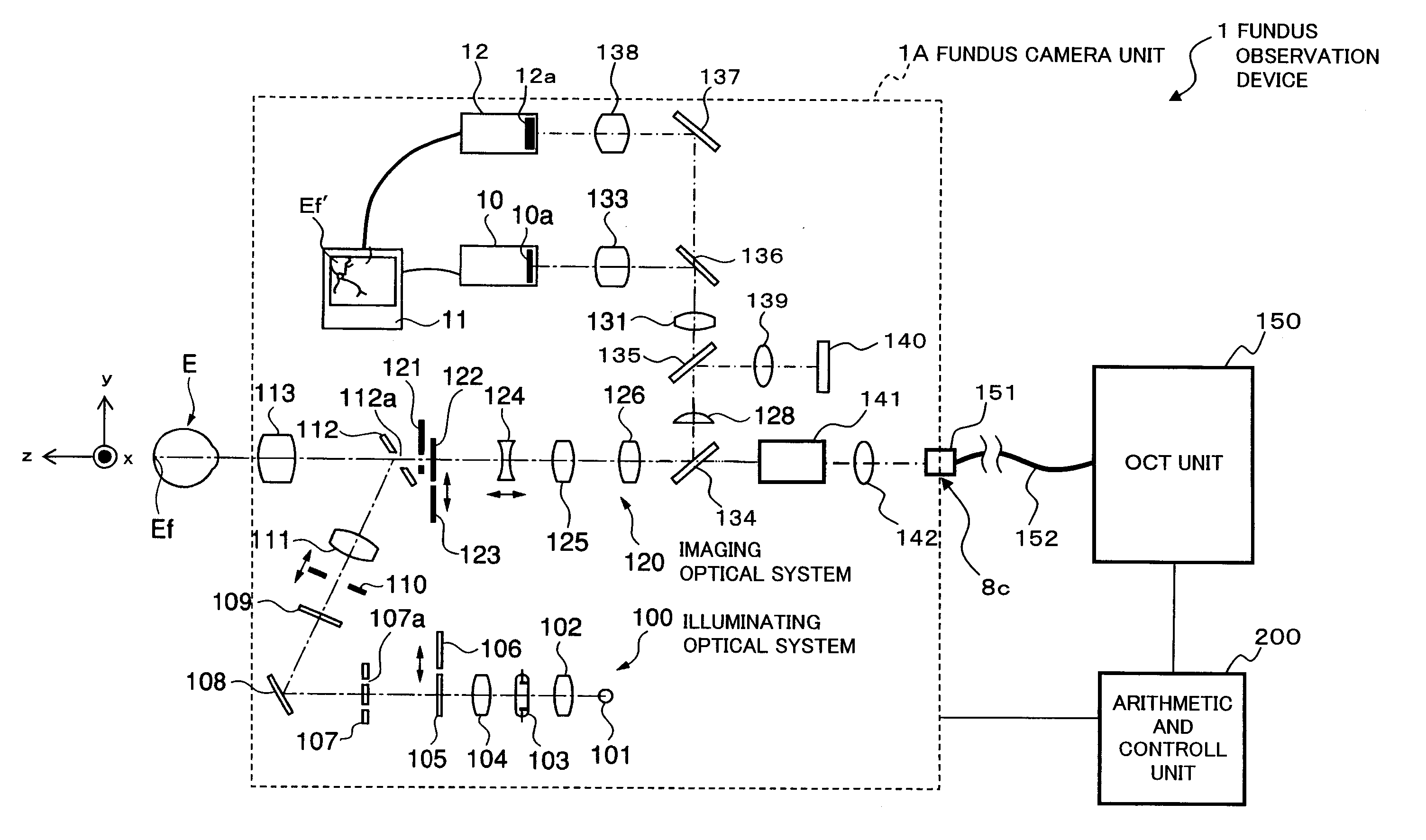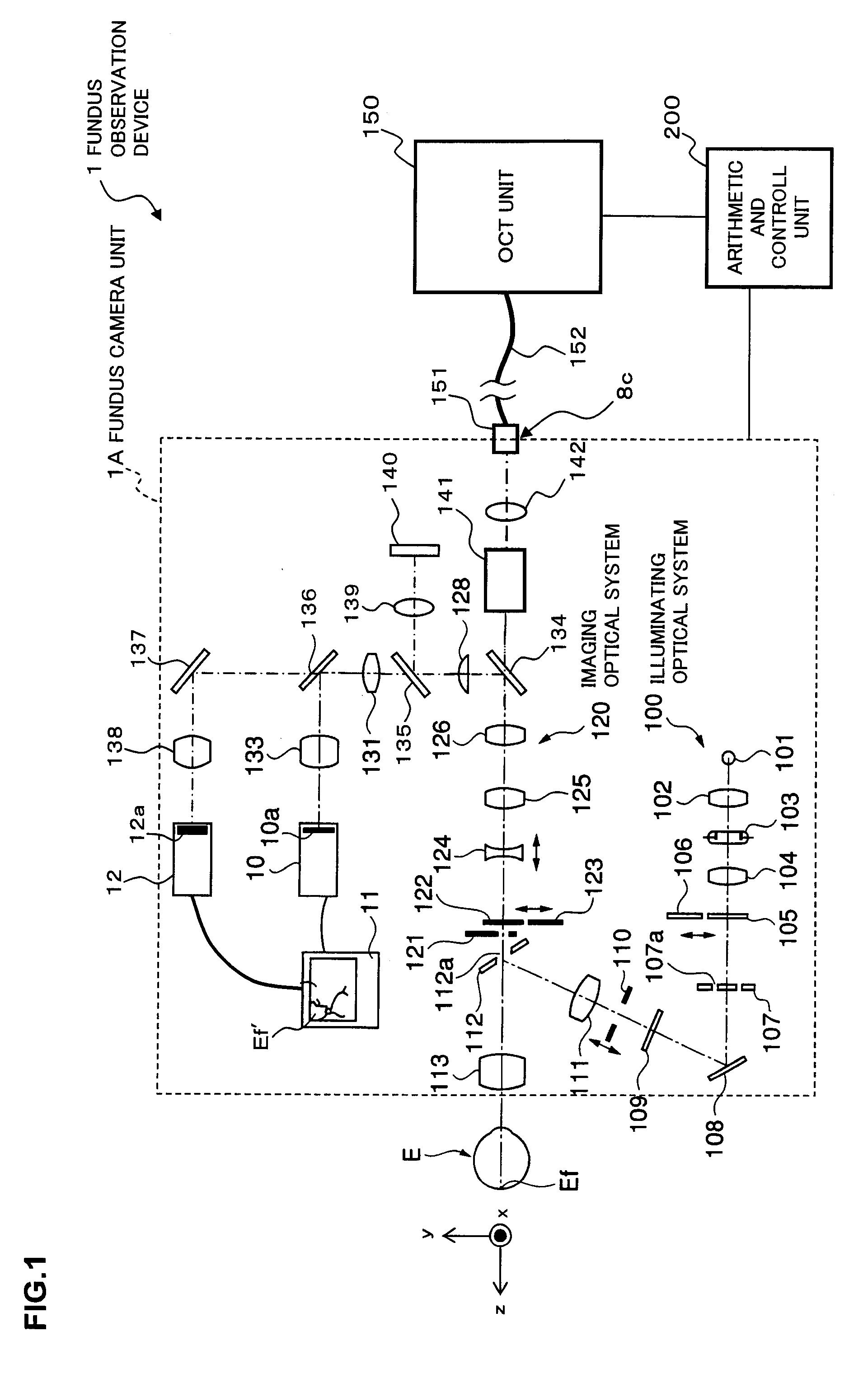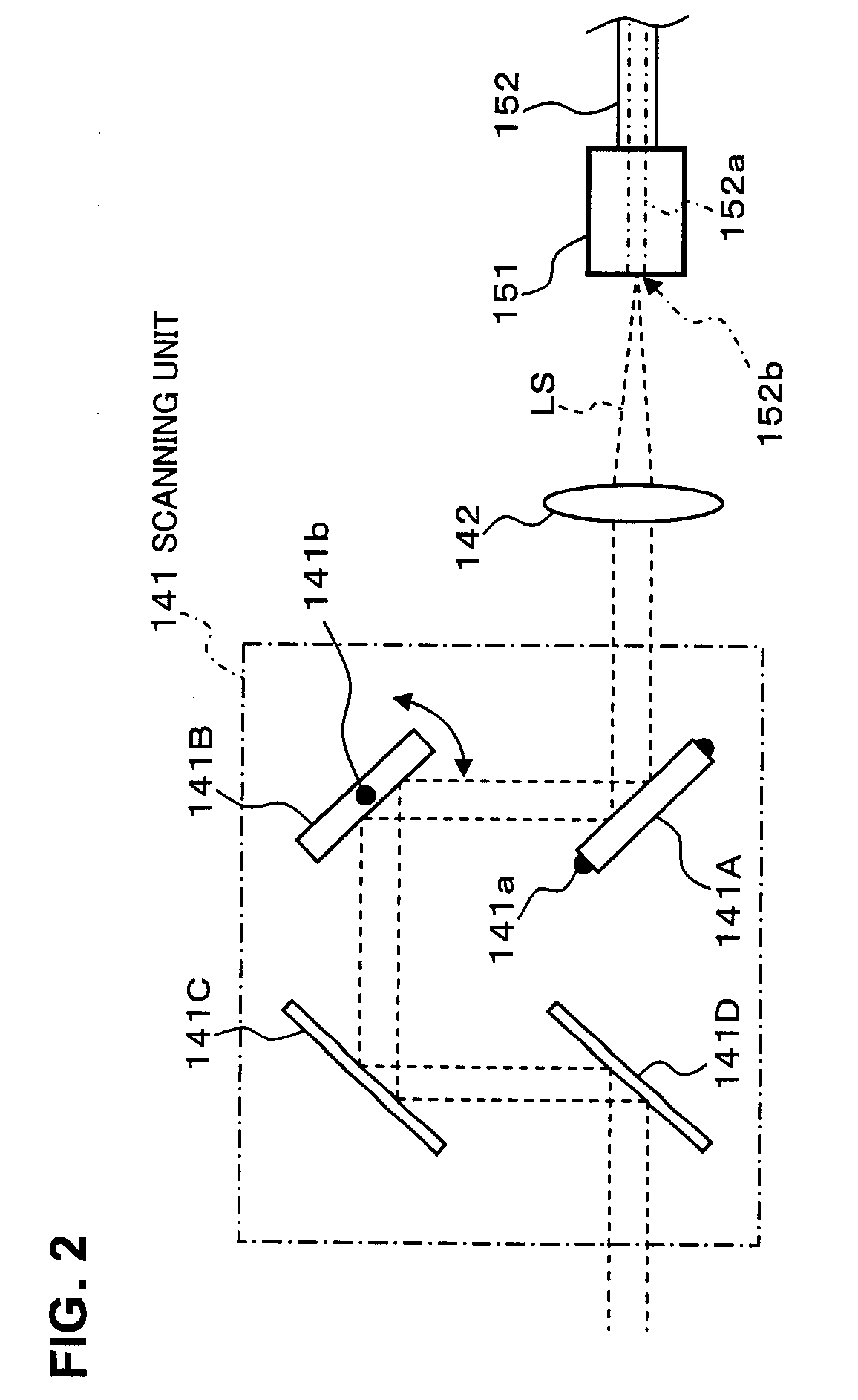Fundus Observation Device
a technology of observation device and fundus, which is applied in the field offundus observation device, can solve the problems of difficult to capture the detailed state of the fundus surface or the entire retina, difficult to capture the 2-dimensional surface image of the fundus of the eye to be examined by a fundus camera, and difficult to capture the 3-dimensional image of the optical image measuring device, etc., to achieve clear and high-efficiency, control the effect of interference efficiency and high interference efficiency
- Summary
- Abstract
- Description
- Claims
- Application Information
AI Technical Summary
Benefits of technology
Problems solved by technology
Method used
Image
Examples
embodiment 1
[0069] First, by referring to FIGS. 1 through 5, the constitution of Embodiment 1 of the fundus observation device related to the present invention is described. FIG. 1 shows the entire constitution of the fundus observation device 1 related to the present invention. FIG. 2 shows a constitution of a scanning unit 141 in a fundus camera unit 1A. FIG. 3 shows a constitution of an OCT unit 150. FIG. 4 shows a hardware configuration of an arithmetic and control unit 200. FIG. 5 shows a configuration of a control system of the fundus observation unit 1.
The Entire Constitution
[0070] As shown in FIG. 1, the fundus observation device 1 is comprised of a fundus camera unit 1A that functions as a fundus camera, an OCT unit 150 accommodating the optical system of an optical image measuring device (OCT device), and an arithmetic and control unit 200 that executes various control processes, etc.
[0071] This fundus camera unit 1A is a component of one embodiment of the “first image forming mea...
modified example
[0156] The constitution described above is merely one example to preferably implement the fundus observation device related to the present invention. Therefore, optional modifications may be implemented appropriately within the scope of the present invention.
[0157] For example, in the above embodiment, as the low coherence light LO, near-infrared light with a wavelength of about 800 nm to 900 nm is used, but light of longer wavelengths can be used to measure images in the deeper region of the fundus oculi Ef. For example, near-infrared light of a wavelength within about 900 nm to 1000 nm is used, and also near-infrared light of a wavelength within about 1000 nm to 1100 nm can be used.
[0158] Moreover, when low coherence light LO of a wavelength within about 900 nm to 1000 nm is used, the near-infrared light of a wavelength within about 700 nm to 900 nm can be used as the illumination light for the fundus camera unit 1A. Moreover, when the low coherence light LO of a wavelength with...
embodiment 2
[0161] The fundus observation device related to Embodiment 2 is described. The fundus observation device of the embodiment has the same constitution of the fundus observation device 1 of the first embodiment (see FIG. 1 to FIG. 4). Moreover, the scanning features of signal light by the fundus observation device of the embodiment and the forming features of tomographic images are the same as FIG. 6 and FIG. 7. The fundus observation device of the present embodiment is described below with regard to the differences from Embodiment 1.
[0162]FIG. 8 shows one example of the constitution of a control system of the fundus observation device of this embodiment. The fundus observation device 20 shown in the same figure is provided with a fundus camera unit 1A, an OCT unit 150 and an arithmetic and control unit 200.
[0163] Herein, the constitution of the optical path of the reference light LR is described. First, an optical fiber 163 guiding the reference light LR has a constitution such that...
PUM
 Login to View More
Login to View More Abstract
Description
Claims
Application Information
 Login to View More
Login to View More - R&D
- Intellectual Property
- Life Sciences
- Materials
- Tech Scout
- Unparalleled Data Quality
- Higher Quality Content
- 60% Fewer Hallucinations
Browse by: Latest US Patents, China's latest patents, Technical Efficacy Thesaurus, Application Domain, Technology Topic, Popular Technical Reports.
© 2025 PatSnap. All rights reserved.Legal|Privacy policy|Modern Slavery Act Transparency Statement|Sitemap|About US| Contact US: help@patsnap.com



